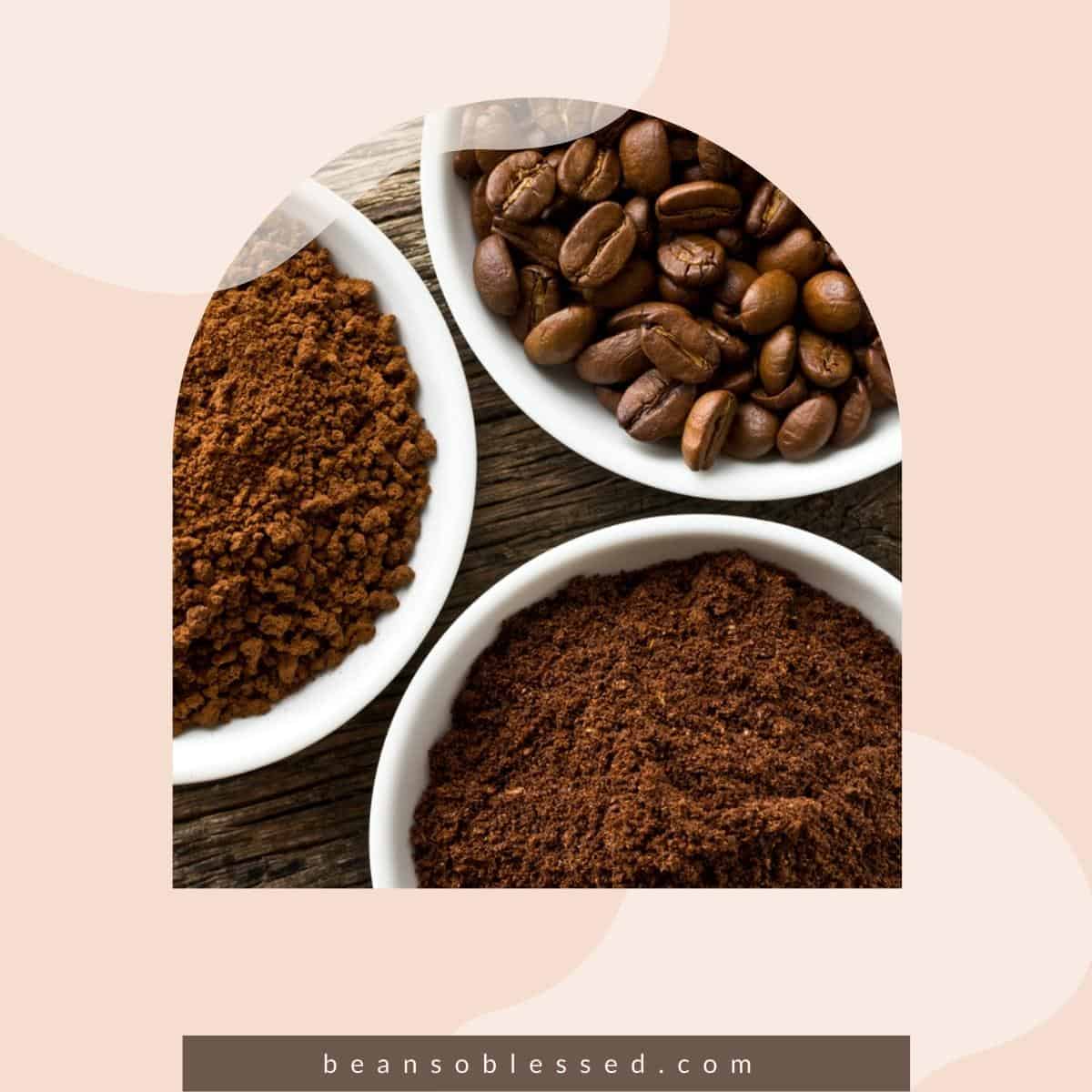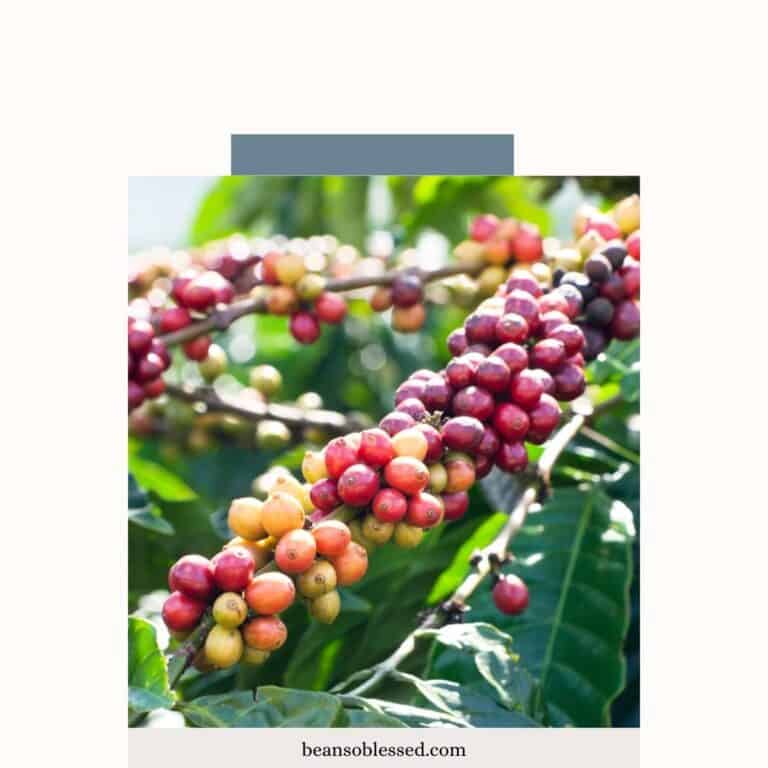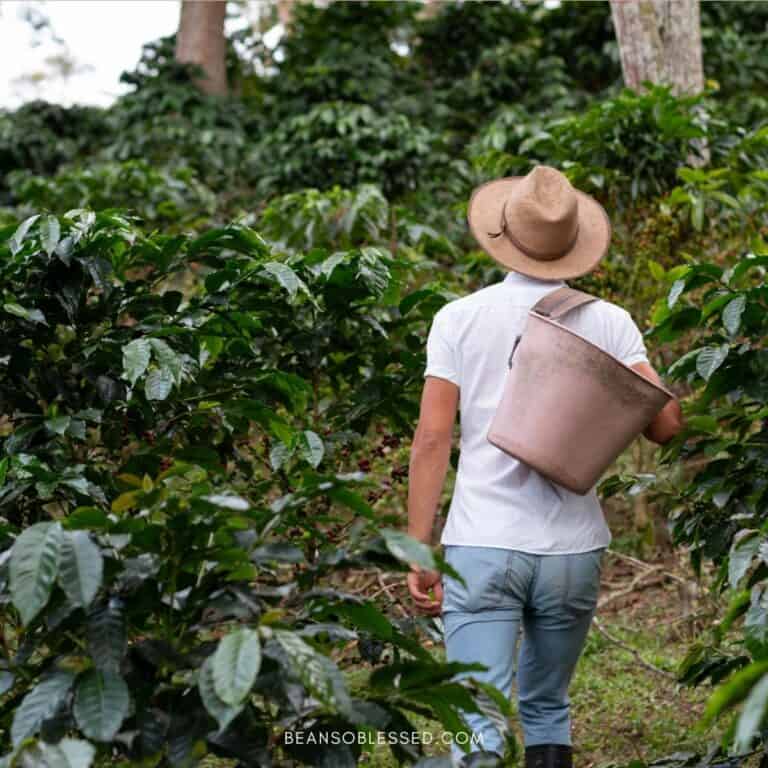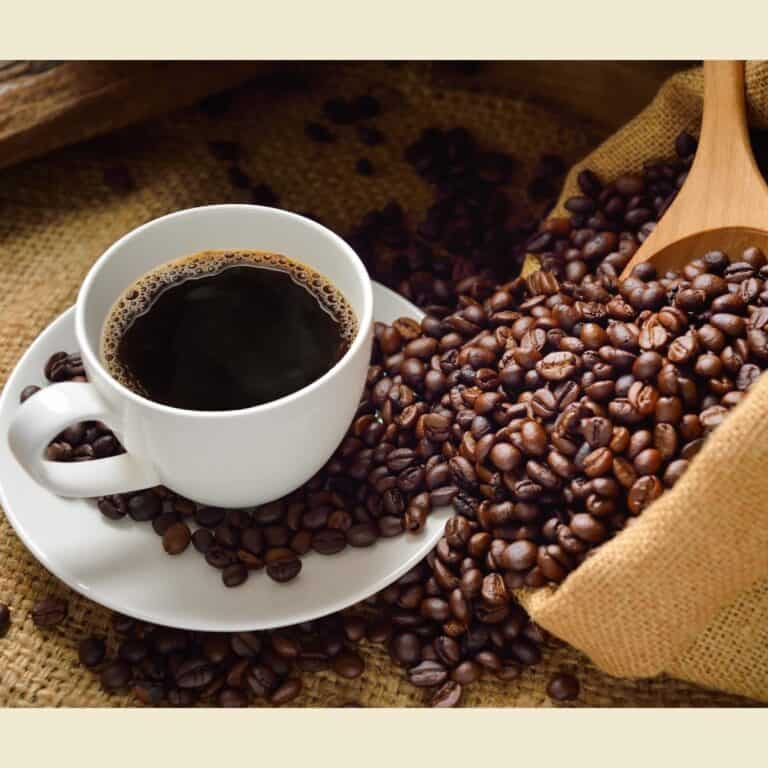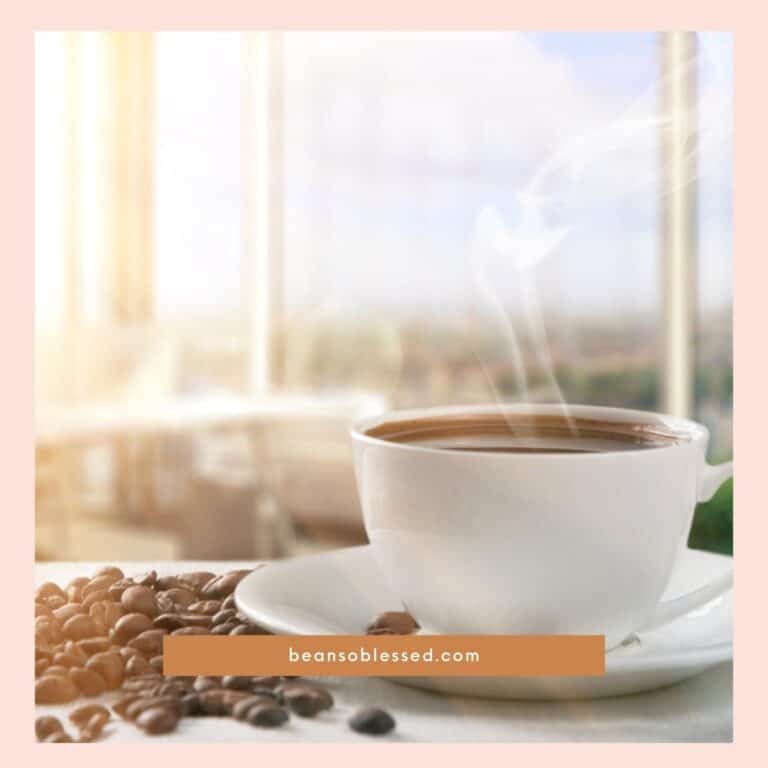The Complete Guide To 4 Types of Coffee Roasts and their Characteristics
You’ve heard of the 4 types of coffee roasts (light, medium, medium-dark and dark roast), but what do they all mean?
Do you feel like you’re always ordering the wrong coffee because you can’t tell the difference between the different type of coffee roasts?
Well, rest easy. The Complete Guide to the 4 Types of Coffee Roasts and their Characteristics is here to help. In this post, we’ll cover everything you need to know about each type of coffee roast so that you can order with confidence the next time you’re at your favorite cafe.

The Different Types of Coffee Roasts Can Be Overwhelming
The coffee aisle in the grocery store can be overwhelming and confusing. There are hundreds of varieties, brands, and types of coffee roasts, each offering its own unique tastes!
What’s the difference between a light, medium, medium-dark or dark roast?
Many people might not realize that different flavors are dependent upon how long the beans are roasted.
The taste of your morning coffee is determined by not only what type or variety you choose but also how the beans that go into it are roasted.
Roasting is a process that transforms green coffee beans into brown, aromatic ones. The result? A delicious cup of joe with an irresistible scent!
Roasting coffee beans longer produces a darker color and a more robust flavor.
Although the type of bean itself makes a big difference, coffee gets much of its aroma and flavor from the process of roasting the beans.
The length of the roasting process can affect the body, bitterness, acidity, and overall taste of the coffee. However, the type of bean can affect these things as well.
To help you learn more about coffee and the four types of coffee roasts, we’ve put together this helpful guide for you.
Coffee Bean Roast Levels
We’ll describe each in more detail below.
But first…..
Why Roast Coffee Beans?
Roasting brings out the flavors and aromas inside the green (fresh picked) coffee bean. The beans are stored green and can be kept without losing quality or taste.
A green bean has none of the characteristics of a roasted bean — it feels soft and spongy when bitten and smells grassy. It also doesn’t taste so great.
The roasting of coffee beans causes chemical changes in the beans.
They are rapidly brought to very high temperatures. When the roaster feels that they have hit the peak of perfection, they are quickly cooled to stop the roasting process.
Roasted beans smell like coffee we know and love. The beans then weigh less because the moisture has been roasted out of the beans.
They are crunchy to the bite and then ready to be ground and brewed into a delicious cup of coffee.
Roasted just right, these beans will give you that rich and mouthwatering aroma with every sip. But don’t let them sit too long, or they’ll start losing their flavor!
Roasting is Both an Art and a Science
Becoming an expert roaster takes years of education, training, and practice. The expert roaster develops the ability to “read” the beans and make split-second decisions on when to stop the roasting process for maximum taste.
The difference between perfectly roasted coffee beans and a ruined roasting batch can be a matter of mere seconds.
Know your Roasts
Nearly all roasters and roasting companies have unique names for their flavored roasts. However, there is little coffee industry standardization.
This lack of standardization can cause confusion when choosing a coffee, but generally, roasts fall into one of the four types of coffee roasts we mentioned.
Consumers often assume that the rich flavors of a dark roast indicate higher levels of caffeine. But it is actually the light roasts that contain slightly more caffeine!
The perfect roast is a personal choice often shaped by national preference or geographic location.
To find your favorite, try a few different roast types – you may even want to do your own cupping (tasting) session!
The 4 Types of Coffee Roasts in Detail
1. Light Roasts
If you don’t like your coffee too intense (like me), a light roast may be just what you are looking for.
Of the four types of coffee roasts, lightly roasted coffee beans are roasted for the least amount of time compared to other types or ‘shades’ of roasts.
Lightly roasted coffee beans typically reach an internal temperature of 356°F – 401 ° Fahrenheit right after the first crack occurs. These less-roasted coffees lack oils on the surface because they haven’t been heated enough during roasting.
The more a bean is roasted, the less caffeine and acidity it will have. Therefore, light roasts tend to be highest in these two ingredients, while darker ones provide lower levels of caffeine and acidity by volume.
Light roasts have a unique flavor profile because the reduced roasting process prevents some chemical changes from occurring inside it.
Light roasts are more likely to highlight the origin flavors of your bean because they have less roast flavor. Light roasts are often characterized by a citrus or lemon tone that some people enjoy.
Cold brew coffee is a popular choice for those who love the taste of light roast coffee. The cold brew process also reduces acidity, making this type perfect if you want to avoid stomach upsets or other adverse side effects from too much caffeine.
Our favorite light roasts:
- Gourmet Donut Shop (light-medium)
- Tanzania (light-medium)
- Ethiopia Natural (light-medium)
2. Medium Coffee Roasts
The medium roast has a medium brown color, a more robust flavor, and a non-oily surface. It is often referred to as American roast and is the most preferred in the United States. Actually, of the four types of coffee roasts, medium coffee is the most popular overall.
This is for a good reason. They reach internal temperatures of 410°F-428° Fahrenheit after their first crack but before a second one! This makes them rich in body as well as having lower acidity, which helps bring out the flavors.
The medium roast is considered to have more balanced flavors. However, it can vary from having more acidity or body, depending on the bean used and the roaster.
A medium roast brings out the nutty, chocolaty flavor notes of the beans. Of the four types of coffee roasts, the medium roast will taste great brewed in a wide variety of methods, including pour-over, automatic drip, Moka pot, and espresso. As a result, it’s a very versatile and enjoyable roast for most coffee lovers (or should we say, coffee snobs?)
Try a medium grind if you’re brewing with the pour-over method or using an automatic drip coffee maker. A medium roasted coffee will extract faster than a light roast, so a medium grind will help avoid over-extraction.
Using a Moka pot or espresso maker, use a fine grind because they extract quickly. Either way, you’ll end up with a great-tasting coffee.
Our favorite medium roast coffees are:

3. Medium-Dark Coffee Roasts
If you want to give your coffee a more intense flavor, the medium-dark roasted beans offer a fuller body, rich taste, and less acidity with just enough bittersweet aftertaste.
The rich, dark color of these beans is a sign that they are roasted to perfection. The second crack will happen just before or during the time when your roasts reach an internal temperature between 437°F -446 ° F.
This sweet spot marks the point where all those tasty oils start leaking out and giving them their signature shine!
With a medium-dark roast, you might notice notes of bittersweet chocolate and roasted almonds.
The French press, espresso, and AeroPress are three popular brewing methods that medium-dark roast lovers tend to prefer.
The most important thing to remember when using a French press is that you need coarse ground coffee. This will prevent your drink from becoming overly bitter due to over-extraction.
A medium-coarse grind is an excellent option if you’re brewing with an automatic drip or pour-over maker, as it helps you to avoid bitter flavor notes
Our Favorite Medium-Dark Roast Coffees:
4. Dark Coffee Roasts
The darker the roast, the less acidity will be found in your coffee beverage. It has an oily surface and a noticeable bitterness. Of the four types of coffee roasts, the dark coffee roast has the least amount of caffeine, surprisingly.
Dark roast coffees are often characterized by their darkness, running from slightly dark to charred. The names of these roasts can vary depending on the desired result – make sure you check before buying!
Dark roast coffee beans are the most oil-coated of all four types. They have an oily sheen and when roasted at temperatures between 464°F – 482 ° F.
You rarely taste any of the origin flavors in a dark roast, only the effects of the roasting process.
The sugars in dark roast beans have a chance to caramelize, giving them sweeter flavors compared with lighter roasts.
Longer roasting times help a coffee’s flavor and body develop more richness, which often leads to a buttery finish.
French roast is considered the darkest roast (roasted at 482 degrees F) and has an unmistakable smoky flavor.
If brewing your dark roasts at home, you may want to use the medium-coarse grind unless doing so with an espresso machine or Moka pot.
When brewing coffee with finer grind size, the darker roast will extract more quickly and may taste unpleasantly bitter.
If you’re unsure what flavor is best for your preferences, then it’s always a good idea to experiment and see which one you prefer.
The dark roast is a type of coffee that many people in Europe prefer because it has an extra bold body and heavy mouthfeel.
Our favorite dark roast coffees:
- Bali Blue
- 6 Bean Blend
- Italian Roast (our darkest roast)!
Final Thoughts
Now that you know a little bit more about the coffee roasting process and the four types of coffee roasts, what roast do you prefer?
Do you like your coffee light, medium, medium-dark or dark? Let us know in the comments below. And if you’re looking for ways to improve your at-home coffee brewing experience, be sure to check out our other blog posts for tips and tricks.
